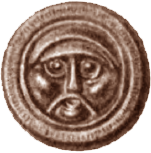The religion of the northern regions before Christianity was of a pagan variety. This is shown through what is known as Norse mythology. The difference between the pagan traditions and Christian values comes to light through a couple of different outlets: Carvings in stones that have survived, written accounts that have been preserved or rewritten, and graves. These sources of information show the importance of the pagan traditions that came before the introduction of Christianity. The information given by these sources allows for study into how this religion functioned. Rituals are shown to be a large part of how it was practiced.

These sources allow a recreation of the mythology of figures and creatures that have been created. The main source of this mythology is inscriptions on tablets that have been preserved, but the problem that comes from this is that these inscriptions do not provide the entire story, which leads to the belief that these stories and poems gave an outline to stories, whose gaps were filled in by the listeners or readers. One source that allegorizes the myths in writing is the Gesta Danorum by Saxo Grammaticus, who writes down a history of the Danes and the introduction of Christianity, the myths and some of the old poems that were also a part of the traditions (Brink 233).

Another part of the traditions was the rituals that were performed for certain occasions and holidays. The large ones that are taken from this are blot (pronounced 'bloat') and symbel (pronounced 'sumble') (BBC). In a typical blot there was usually a sacrifice of an animal to the worshipped pagan deities at the time, followed afterwards by a feast, usually in a sense to gain some sort of favor towards some aspect. A symbel on the other hand was a drinking ceremony that involved honoring the gods, their ancestors, and whatever they felt like needed honoring at the time, usually in that order. There was also a drink offering that was given to the gods at the end of the symbel that was tradition to the gods or wights of the land.

There was also a focus on the grave and burial of the dead. This was shown to be important to them through the use of sacred tombs (Daniel 30). These tombs were large and had a portion of the tomb above ground with the buried seated on a chair looking out towards a direction, but counter to this, there are references to corpses being tied to their chairs (Price 132-139). The dead were not thought to be truly gone, and there are suggestions that the deceased may have a way to travel back to the land of the living once more.

[K. G.]